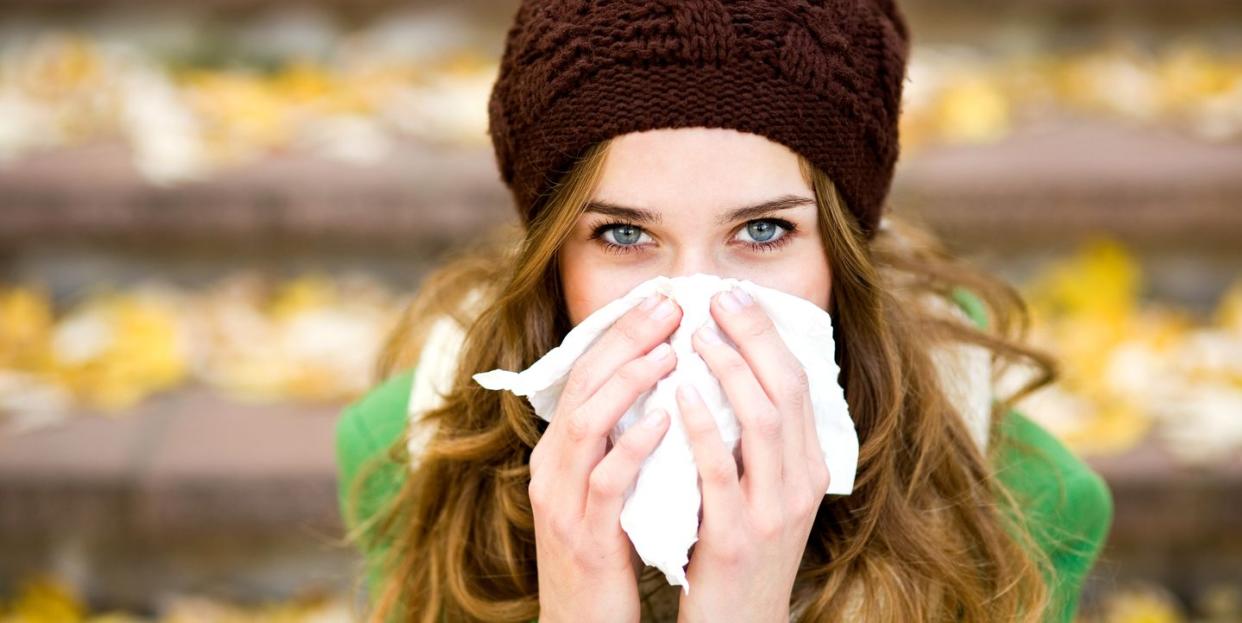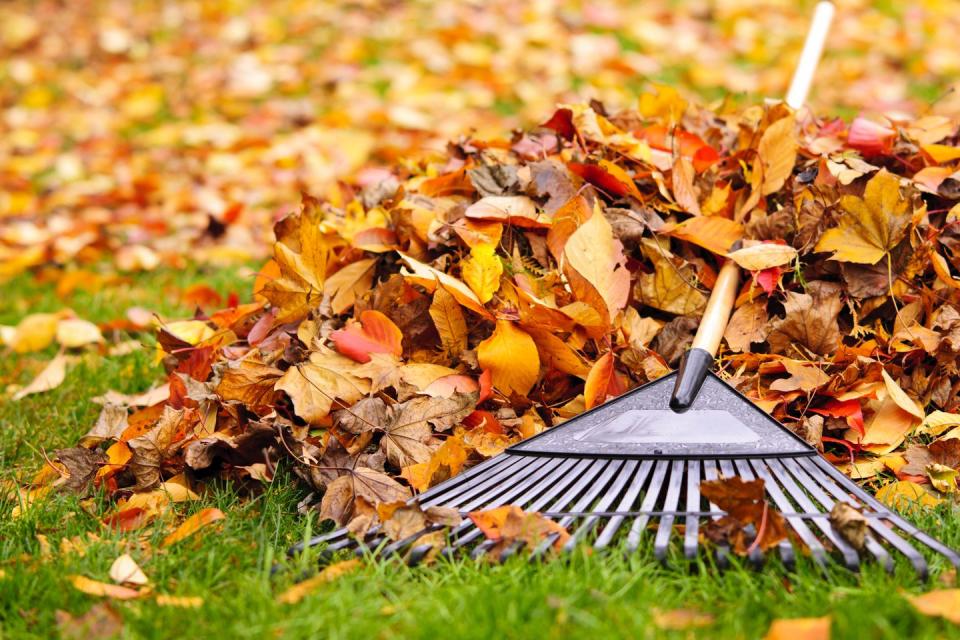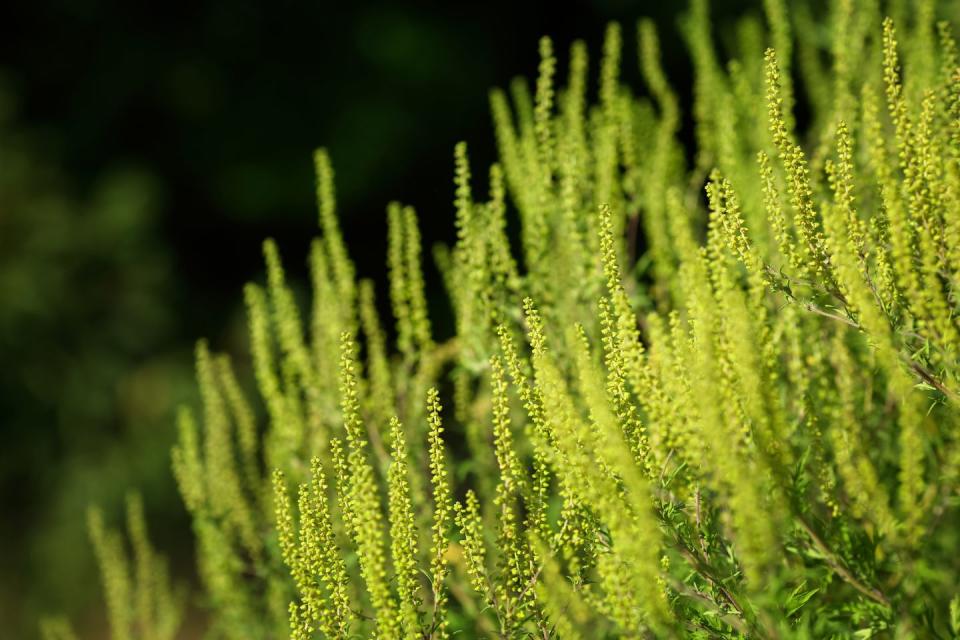Yikes: Warmer Weather Is Making Fall Allergies Way Worse, According to an Allergist

Pulling on your coziest sweater and strolling through the park sounds like the perfectly way to spend a brisk autumn day — but when that scenario also involves a runny nose, itchy eyes, and a nagging cough, it’s not quite as fun. Though many people think of spring, with its blossoming trees and flowers, as the worst season for allergies, they can get just as bad or even worse for some people when the weather cools, says Edith Schussler, M.D., a pediatric allergist at Weill Cornell Medicine in New York.
The biggest culprit for fall allergies is ragweed — up to 20% of Americans are allergic to the weed that blooms all over the United States. And it’s a powerful allergen: In fact, just one ragweed plant can produce up to 1 billion grains of pollen during its single-season lifespan. In the past, the high season for ragweed allergies lasted from late August through September, but Dr. Schussler points out that that due to changes in weather patterns, the season has gotten longer and more brutal for allergy sufferers.
"We are having these longer, warmer falls, so the pollen sticks around much later in the season, from early August through October," she explains. "With all that pollen going out, more ragweed is being seeded and growing, so it’s a vicious cycle." You don’t just find ragweed in bucolic country settings, either: "There is a lot of ragweed in cities as well, because the carbon dioxide from cars helps it grow," says Dr. Schussler.
In addition to ragweed, fall is prime season for indoor and outdoor molds. The fungus can gather up in piles of moist leaves — the very ones that kids like to jump in and adults need to rake up every weekend. But you can still enjoy the most beautiful season of the year without wrapping yourself up in a Hazmat suit or hiding in your basement until the first snowfall. Here’s how:
Keep track of pollen counts.
If you know exactly which allergens you react to (a visit to your allergist can narrow it down), you can keep track of when that pollen is at its highest levels, and plan your outdoor activities accordingly. Download a free app such as Pollen.com’s Allergy Alert, which will give the forecast for specific pollens in your city.
According to the Asthma and Allergy Foundation of America, pollen counts are highest right after dawn in rural areas; in urban environments, prime sniffle time is between 10 a.m. and 3 p.m. Since rain and cold weather slow down the release of pollen, your best bet for an outdoor adventure is usually just after a rainfall.
Avoid fall leaves as much as you can.
The best strategy is to avoid raking leaves or mowing the lawn until the fall allergy season is over. But if you're the family member responsible for yard work, take precautions like wearing goggles and a face mask, suggests Dr. Schussler.

Keep pollen outside, where it belongs.
You can’t avoid pollen when you’re walking around outside, but you can do your best to make sure it doesn’t hitch a ride home with you. Wear a hat when outdoors to keep pollen from attaching itself to your hair, and remove hat and shoes when you come inside. (Also, go ahead and be that person who asks all houseguests to remove their shoes.)
Change immediately into indoor clothes, and rinse off before bed so you don’t trail pollen onto your pillow and sheets. Keeping windows closed and running an air conditioner with a HEPA filter can also help, suggests Dr. Schussler.
Dry up any dampness in the house.
Mold grows where it's moist, so be sure to regularly wash and dry bath mats and towels. If you must use a humidifier in your home, clean it out at least twice a week so mold doesn’t grow in the water tank.
Start taking medications before the season starts.
Talk to your allergist about the best OTC or prescription medications to treat your symptoms early on. These can include antihistamines (which come in pills, nasal sprays, and eye drops), steroid nasal sprays, mast cell inhibitors, and leukotriene modifiers. Simple saline sprays or drops can literally wash the pollen out of your nostrils and eyes.
It’s best to start taking antihistamines a few days before the season starts, says Dr. Schussler. That way, you may not start producing histamines (the chemicals in your body that cause all the itchiness and dripping) at all. Depending on where you live, this preparation could start as early as the beginning of August.

Look into long-term relief.
If you’ve made your home an allergen-free sanctuary, avoided jumping in leaf piles, and fully stocked your medicine cabinet yet still feel miserable each fall, talk to your allergist about trying a long-term treatment via allergy shots. With this form of immunotherapy, your body gets acclimated to the allergen that’s tormenting you through a series of shots that increase in dosage. The build-up stage can take three to six months and involves weekly or even twice-weekly shots in the doctor’s office. Once you’ve reached the appropriate dose, you’ll need shots only once or twice a month.
A newer form of treatment, called sublingual immunotherapy, replaces shots with tablets that dissolve under the tongue. The great news is that you can take these tablets in your own home, and research shows that they may work as well as allergy shots. So far, health authorities have only approved tablets for just a few specific allergens, but if fall ragweed is your mortal enemy, you’re in luck – there’s a tablet for that.
You Might Also Like

